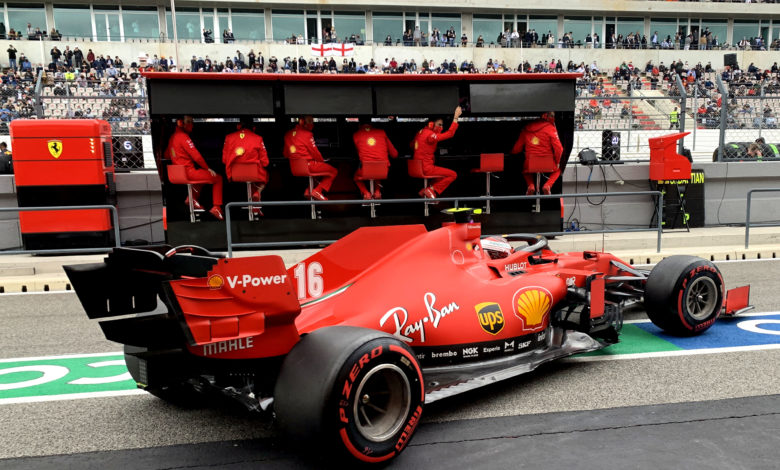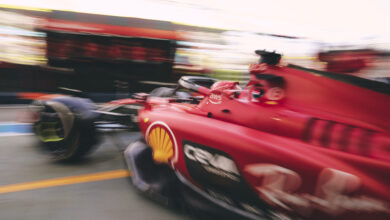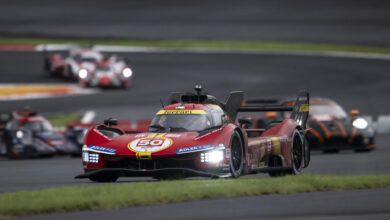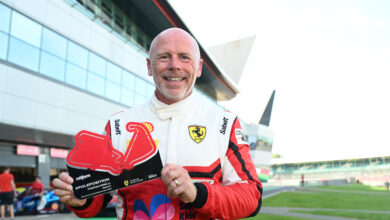Tech Talk: Portuguese Grand Prix Analysis
Scuderia Ferrari picked up 13 points on Formula 1’s first appearance in Portimao, with a fourth place for Charles Leclerc and a tenth for Sebastian Vettel. It was a very busy weekend with plenty to deal with, not least the fact the track was more or less an unknown factor as the last test session dated back to 2008. On top of the usual tasks of setting the car up for qualifying and the race, the team also had some aero updates to evaluate on the SF1000, plus Pirelli provided all teams with 2021 prototype tyres to try in the opening 30 minutes of the second free practice sessions, which made things more complicated for the team, as Iñaki Rueda, Head of Race Strategy, explains in the usual Monday debrief.

“There was a lot to do in a very short space of time, and a couple of interruptions to the sessions meant there was hardly any time to test the tyre compounds over a long run. Furthermore, the track had recently been resurfaced which added a further variable for us engineers.”
What tyre compounds did Pirelli provide?
“The choice was in fact the most conservative, with the three hardest compounds from C1 to C3 and even one set of Softs was replaced with a set of Hards. There were two difficulties we knew we would have to face on the tyre front: graining and warm up. We believed the softest tyre would suffer mainly with the former while the Medium and Hard would struggle to get up to temperature both in qualifying and at the race start and after the pit stops. That’s why we worked hard with the drivers to prepare the tyres as well as possible, doing one more lap than usual before the qualifying lap. It worked well in Q1 on the Soft and then in Q2, we did the first run on the Medium with both drivers, also because the performance difference between it and the Soft was not so clear. We therefore went for a longer than usual first run in Q2, with a preparation lap prior to the push lap, then a slow down lap followed by a second push lap. For Charles, who was already quick on his first run, the C2 was the obvious choice, but it was less so for Sebastian, although he did have a better feeling on this tyre. Unfortunately, he still failed to make the cut. Charles got through on the Medium, with only the Mercedes pair doing the same, which ensured a strategic advantage over several of our closest rivals for the race and then he finished off the job with a very nice fourth fastest time in Q3.”
The tyre warm up problem reappeared at the start of the race.
“Yes, aggravated by the short rain shower that started on the formation lap. The opening laps were very difficult for all the drivers on Mediums. Charles lost a lot of places, Sebastian not quite so many, but it still proved crucial in terms of strategy. Once the tyres were in the right temperature window, Charles started to regain the places he’d lost, getting back up to fourth quite comfortably. From then on, he ran his race carefully and precisely. The trickiest moment could have been the pit stop, because it involved switching to the Hard, which was also difficult to get up to temperature, so that he might have been vulnerable to attack on the first laps, as well as the fact that the pit lane exit created an even bigger disadvantage over the first few corners for those coming out of the pits. That’s why Charles’ stop was made a few laps earlier than necessary. It meant we covered Perez’s return as he got close for a couple of laps, but dropped back once the Hards were up to temperature.”
Sebastian’s race was definitely less straightforward
“We had decided to start on the Medium specifically to avoid the risk of a performance drop because of graining, before switching to the Hard as the basic plan. After a dozen or so laps, it was clear that his direct rivals would be those who had started on Softs and were potentially two-stopping, such as Norris, Albon, Ricciardo and Raikkonen. We decided to stick with our first choice so as to cover Albon, bringing Sebastian in on lap 27 to fit Hards. Norris and Albon did indeed make a second stop on laps 43 and 46 respectively, while Raikkonen and Ricciardo, probably in light of Ocon’s long 53 lap first stint on Mediums, tried to go to the end. At this point, Seb still had the possibility of making the most of a newer but harder tyre to try and pass others on track. He managed it with Raikkonen on lap 53 and came up behind Ricciardo but flat spotting a tyre at turn 1 on lap 56 put an end to any chance of moving further up the order.”
We mentioned the aero updates earlier. Anything else to add on that topic?
“In Portimao, we completed a development programme that began in Sochi. In Portugal specifically, we introduced a new floor and diffuser, which we had wanted to test at the Nurburgring, but could not because of the rain. We also experimented with a new configuration to the end of the floor to reproduce the downforce levels we will have in 2021, after recent changes to the technical regulations and also tried some solutions that should help to warm up the tyres, an area in which we have suffered this year, especially in the low temperatures we have encountered in this unusual season. I’d say the results were positive, to the extent we then fitted the updates to both cars. Now we have to confirm what we saw in Portimao this coming weekend at Imola. That will be another unusual weekend give that the event takes place over just two days. It won’t be the first time, given that in the past, bad weather has led to sessions being delayed to the following day, but it will still be a different experience. Who knows, it might be an additional opportunity to do well.”




